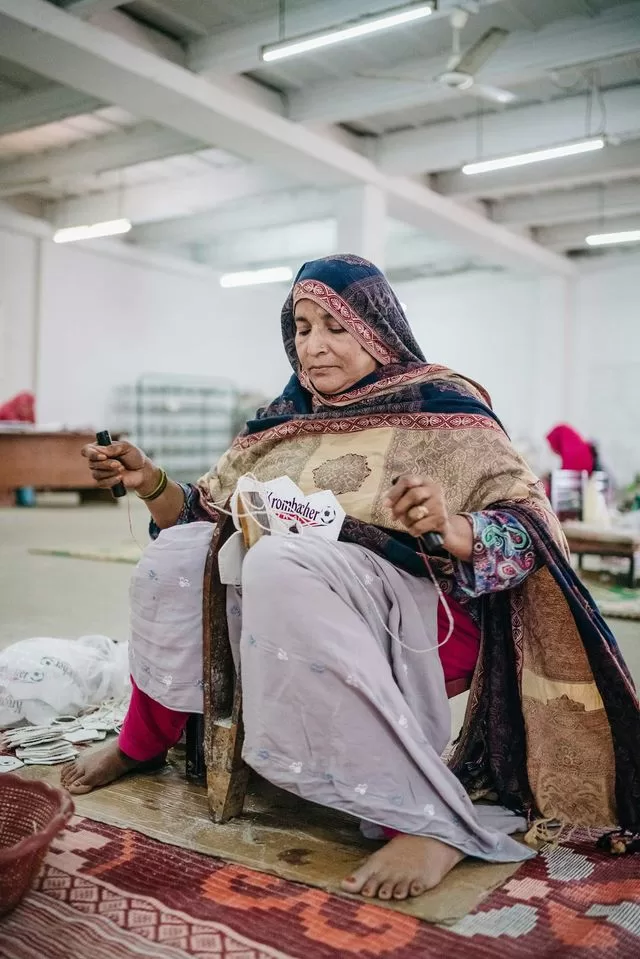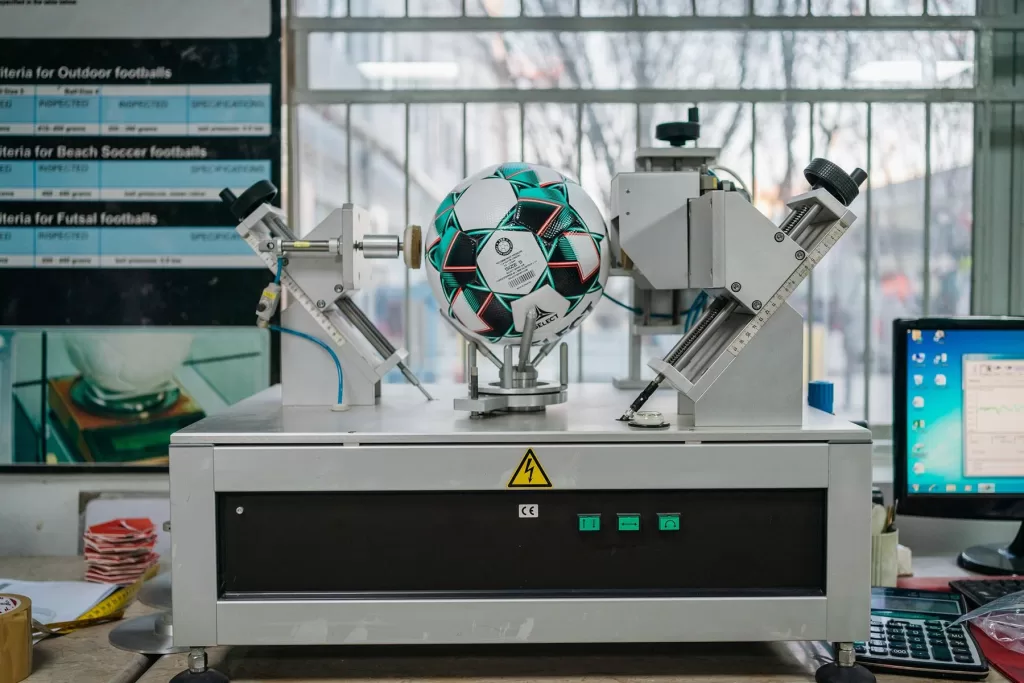Sialkot, a city in northeast Pakistan, produces about 70% of the world’s supply —including Adidas’s Al Rihla, the official ball of the 2022 FIFA World Cup in Qatar.
If you have a soccer ball in your house, there’s a pretty good chance it came from Sialkot, a city in northeast Pakistan near the Kashmiri border. More than two-thirds of the world’s soccer balls are made in one of the town’s 1,000 factories. That includes the Adidas Al Rihla, the official ball of the 2022 FIFA World Cup in Qatar, which kicks off this month.

In Sialkot, about 60,000 people work in the soccer ball manufacturing business—or about 8% of the city’s population. Often they work long hours and sew the balls’ panels together by hand.
More than 80% of the soccer balls made in Sialkot use hand stitching, a laborious process that makes the ball more durable and gives it more aerodynamic stability. The seams are deeper, and the stitches have greater tension than those sewn with machines.
At manufacturer Anwar Khawaja Industries, stitchers get paid roughly 160 rupees—about $0.75—per ball. Each one takes three hours to complete. At three balls a day, a stitcher can earn about 9,600 rupees per month. Even for a poor region, the wages are low. A living wage for Sialkot is around 20,000 rupees a month, according to researcher estimates.
Most of the people who stitch the balls are women. In a typical day at Anwar Khawaja Industries, they might stitch two balls, return home to cook for their children, then continue their work in a nearby village in the afternoon.
Men typically work in different stages of the manufacturing process, preparing materials or testing for quality. Until labor regulations were enacted in 1997, the factories in Sialkot employed children as young as 5 alongside their parents. A 2016 report listed the prohibition on child labor as a threat to the industry in Sialkot, because it “took away a whole slice of a potential skilled generation,” leading to an ongoing worker shortage.
Workers apply adhesive to textile materials, forming part of the soccer ball’s synthetic leather. Made from cotton, polyester and polyurethane, the components of the synthetic leather come from different countries. Chinese materials are used for the cheapest balls, whereas South Korean ones are used for higher-quality balls. For any balls destined for the German Bundesliga or other European leagues, components from Japan are used.
Workers examine soccer ball panels at Anwar Khawaja Industries. Each traditional ball is made up of 20 hexagons and 12 pentagons joined by 690 stitches. However, a growing number of soccer balls are now pieced together with hot glue, a process called thermo bonding. These balls are still high quality and cheaper to produce, but they’re more expensive to transport and, unlike a stitched ball, can’t be deflated or repaired.

Finished soccer balls go through rigorous testing to meet FIFA standards. Here, a ball is undergoing a sphericity test to ensure its perfect roundness for true flight, bounce and movement. People around the world buy an estimated 40 million soccer balls each year—and sales are expected to jump during the World Cup.
Source: Bloomberg